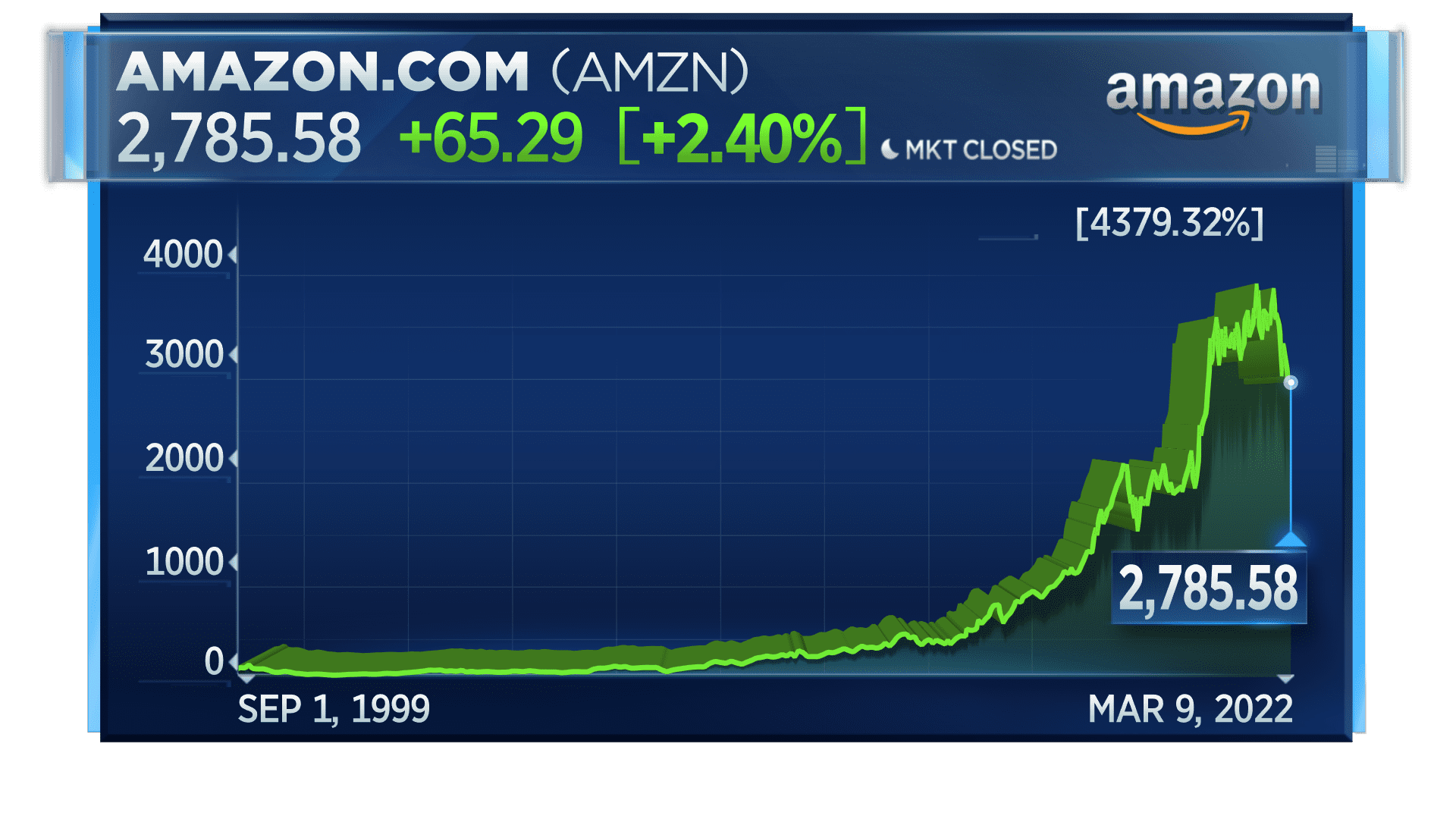
Amazon stock split – Amazon’s stock closed at $2,447 per share on Friday. The stock closed at nearly $125 per share on Monday. On paper, that amounts to a decline of approximately 5000%.
However, Amazon shareholders did not lose any money on Monday. Indeed, if they had purchased Amazon shares on Friday and sold them on Monday, they would have made a profit — short-term capital gains tax aside – since this stock closed higher.
That’s because, for the first time in 23 years, the company executed a stock split. A stock split occurs when a single share of stock is divided into numerous shares. Typically, companies conduct 2-for-1 or 3-for-1 stock splits, in which shareholders receive an additional one or two shares equivalent to the previous trading price of one share.
Amazon, on the other hand, did a 20-for-1 split. Here’s what that means and why it might be beneficial for shareholders.
Amazon Stock Split – What is a 20-for-1 Split?
With Amazon’s unexpected move to split its stock 20 for 1 in March, and the split finally taking effect on 6th June, all eyes were on Wall Street to see how they would react to the new share price, as well as what new price targets analysts would assign to the stock at its new price.
A 20-for-1 split means that for every share owned before Monday, Amazon shareholders received 19 additional shares. Since Amazon shares finished at $2447 on Friday, the price of shares after the split was roughly $122, or $2447 divided by 20 before markets started on Monday.
Alphabet, Google’s parent company, is contemplating a 20-to-1 stock split that will begin on July 15.

Since share prices declined according to the number of shares made available, Amazon’s market value remained unchanged as a result of the split.
Amazon said the split makes the stock “more accessible for anyone who wants to invest in Amazon” and gives employees “more flexibility in how they manage their equity in Amazon.”
Shareholders do not lose money as a result of a stock split, just as Amazon’s market value does not change.
Is a Stock Split Good? Should you buy before or after a stock split?
Stock splits are generally regarded as a positive sign since they signal that a company has performed so successfully over time that the price of a single share has become too expensive for the average retail investor.
Stock splits should, in theory, not affect share prices once they take effect because they are essentially cosmetic changes.

However, according to Bank of America research analysts, S&P 500 companies that announced stock splits “significantly outperformed the index 3, 6, and 12 months after the initial announcement” since 1980. Over a year, stocks that announced splits gained an average of 25%, compared to 9% for the S&P 500.
According to their research, it’s better to buy a stock before it splits so you can have a piece of the action before it shoots up.
But it’s important to keep in mind that “some of the outperformance is likely due to momentum,” the analysts wrote in a research note published after Amazon announced its split on March 9.

“Once the split is executed, investors who have wanted to gain or increase exposure may start to rush for the chance to buy.” Ultimately, a company’s underlying strength is what drives the direction of a stock, they wrote.
However, as of June 6, Amazon’s stock has declined more than 11% since the announcement of the split. However, this comes at a time when tech stocks have been on the down as consumers cut back on spending owing to inflation and recession fears increase. Historically, tech stocks have under performed other sectors such as consumer staples and health care during recessions.
Continue Reading:
9 Simple Tips to Increase Your Sales on Amazon